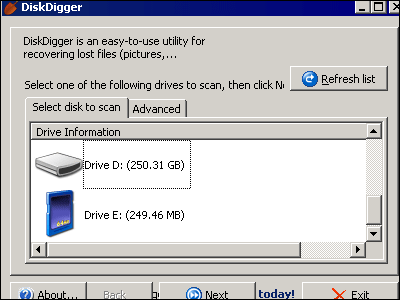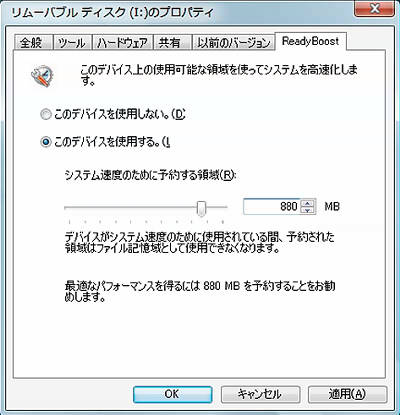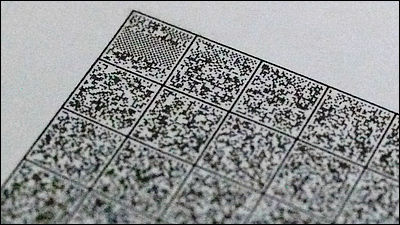Report on the case where lifetime came after what happens when USB memory rewriting limit lifetime comes
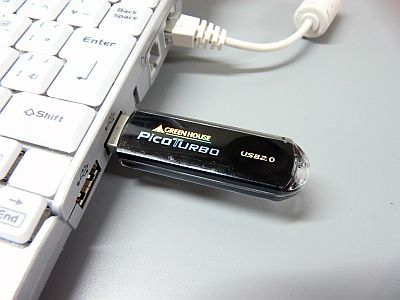
Flash memories such as USB memories have limitations on the number of times of writing, etc. due to their characteristics, they seem to be broken if they are reading / writing frequently .... I think that there are many who have heard of, but actually reading and writing What will happen if it can not be done? As a valuable case, USB memory purchased at the editorial department seems to have reached the end of life on January 13, so I will introduce it as an example.
What kind of state is it all together? Details are as below.
The lifetime came by the following USB memory.
GH-UFD 2 GTB
This is the real thing

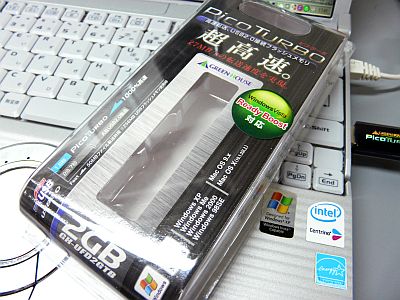
I used it frequently for 2 weeks to once every 3 weeks or so, and I used it to cram a Linux ISO image etc and move it.
I bought it on 27th February 2007. It was on January 13, 2008 that it was discovered that a breakdown occurred. An error occurred when trying to decompress by returning the ZIP file copied to this USB memory to the local memory as a trigger. It turns out that the image can be further reduced. It looks like the following.
Original image (For the sake of posting, it is shrunk from actual size)


When copying to the USB memory, it becomes impossible to read out part, it becomes like this
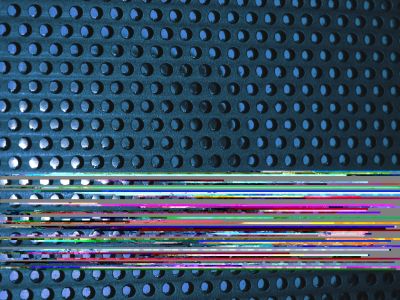

After actually copying 348 sheets of JPEG images (488 MB) into this USB memory which was formatted, we confirmed that 23 pieces became like the above feeling. It seems that not all areas are out, but it seems to be useless if data is written in some places. In the case of compressed files such as ZIP files, it can not be decompressed.
Also, when you select this USB memory and issue the property, the capacity when you actually select the inside files etc is incompatible with everyday situation.
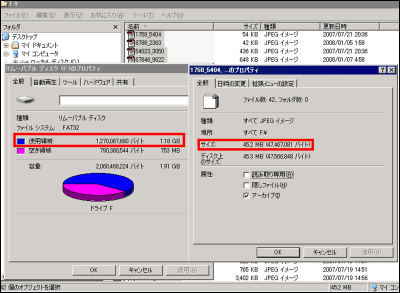
Of course I did not have a quick format, I did a proper format, ScanDisk, but it did not work normally, it was not effective.
Although I found out more, it is possible to write it after formatting ScanDisk, but if I copy the file immediately after that, some of the files already in it are gone, the file size is the same Despite the fact, the MD5 value is also different.WMD 5 sumThe result of actually checking with is the following image.
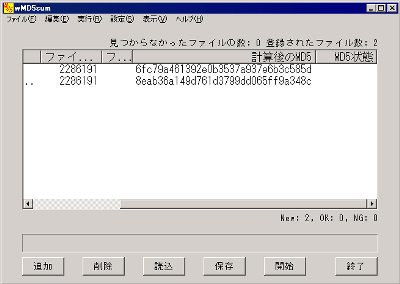
In other words, it has become another file.
Moreover, just by inserting and removing the USB memory, the file will be broken and will disappear.

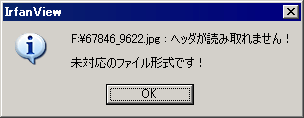
Obviously this USB flash memory is wrong as other USB memories do not do this even if using the same USB port. I tried it on other machines, but the results are the same. Even if you can not even recognize even Vista machines.
I have no choice but decided to take it for repair. The guarantee seems to be effective because it is somehow within a year.
In addition to the USB memory, there is a good reason for the flash memory system to be broken in this way.
Explore the principle of "flash memory", which is becoming increasingly popular with high capacity and high speed [WinPC Labs]: Nikkei personal computer online
The flash memory uses a "tunnel oxide film" having an insulating function in order to hold the charges attracted to the floating gate. During writing or erasing, electrons pass through this oxide film, and the oxide film deteriorates. When access is frequent, the oxide film is damaged and it can not fulfill the function of insulation. That's why there is a limit to the "write count" of flash memory. For example, if it is a NAND type, it is said that about 1 million times is the upper limit of the number of times of writing.
Memory cards used with digital cameras are devised to extend the number of write operations, such as writing data evenly to a plurality of memory cells or by avoiding damaged portions. However, there is no limit on the number of times in principle.
The reason why you are doing this is because you can only select such a method in the current state to keep records without electricity going through. Also, although this rewritable number of times is possible, the number of times that rewriting actually occurs can be quite a large number even when copying one file, so it can not be grasped simply.
Memory Triangle: Data recovery on-track
For example, if you make or change 20 files a day, it will only have 100 days to 1000 days. Also, even though it passed manufacturing tests, the deterioration rate of the normal part is not exactly the same due to manufacturing variations. In some cases, it may deteriorate as soon as possible, so backing up is essential.
So it will be broken when it breaks even if it is very few times of use, so it is probably because it seems that it is quite dangerous to say "there is only data in the USB memory" It is safe to keep it in multiple media as well. Be careful before you lose everything.
Related Posts:

